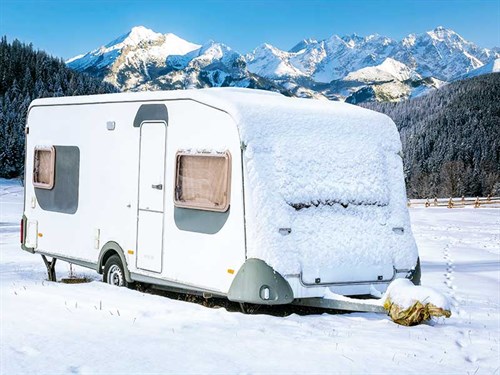What types of insulations are available?

Below is a list of the most common forms of insulation used in the motorhome industry:
- Fibreglass insulation: These are similar to the batts that insulate your home.
- PU or polyurethane foam: PU is a polymer composed of organic units joined by carbamate (urethane) links.
- XPS or extruded polystyrene insulation: XPS is a rigid insulation that’s also formed with polystyrene polymer but manufactured using an extrusion process and is often manufactured with a distinctive colour to identify product brand.
- EPS or expanded polystyrene foam: EPS is a closed-cell insulation that’s manufactured by ‘expanding’ a polystyrene polymer. The appearance is typically a white foam plastic insulation material often used for packaging.
- PIR or polyisocyanurate: This is an evolution of polyurethane, which is stronger, and has a greater thermal resistance. In fact, PIR offers the highest R-value of any material per thickness.
What should I look for when choosing insulation?
Insulation is commonly measured by ‘R-value’, which rates its thermal resistance. The higher the R-value, the higher the resistance to transfer heat.
Essentially, this means, the higher the R-value of a material, the better it is at keeping you nice and cosy inside your vehicle during winter.
Other factors when choosing insulation include longevity and moisture-resistance as well as ease of installation if you are retrofitting.
For example, while fibreglass insulation has a high R-value, it also attracts moisture, reducing its lifespan, and you will eventually end up with a musty smell inside your vehicle.
XPS, on the other hand, is water-resistant with a long lifespan.
How does insulation compare between different vehicle types?
Panel vans use the original vehicle manufacturer’s body, which is then fitted out as a campervan. These vehicles have limited insulation materials.
Some of them will have no more than carpets and some nicer wall linings to cover the metal frame work, while others will add some extra insulation such as Styrofoam sheets or PIR to the roof and floor, and line the walls with fibreglass sheets or reflective layers of film bonded to two internal layers of heavy gauge polyethylene bubbles.
Motorhomes and caravans commonly use a multilayered skin for the roof, walls, and floor. The outer skin is usually made from aluminium or fibreglass.
GRP or glass fibre reinforced plastic is the preferred choice for floor and roof linings due to its durability and resistance against stone chips and hail. Next is a layer of insulation that could be any of the materials listed above.
These will vary depending on the quality and price category of the built. While high-end motorhome manufacturers use materials with a higher R-value and wall thickness throughout, budget builds focus more on cost savings than how well the vehicle is insulated. The inner skin is usually aluminium or timber.
What other measures are used to improve insulation and winter usability?

Double glazed windows are commonly used in modern motorhomes and caravans to reduce heat loss and moisture build-up inside your vehicle.
Windows play a significant part in insulating your motorhome. The best insulation cannot be effective if there are other ways for the warmth to escape.
Water tanks are also insulated in some vehicles to minimise the energy needed for heating up water and to prevent it from freezing in wintery conditions.
Make the choice by doing your homework
Considering all the aspects of different construction materials and methods is an important part of choosing the right motorhome/caravan for you.
The hard reality is that you can’t see most of the differences just by looking at the vehicle.
You have to do your research prior, so you are prepared and ready to ask the right questions.
While it might not be the number one priority on your list, good insulation could save you from cold and damp nights in the future.
These high-end materials will not only perform better but will also have a longer lifespan and can save you a lot of money in the long term.





